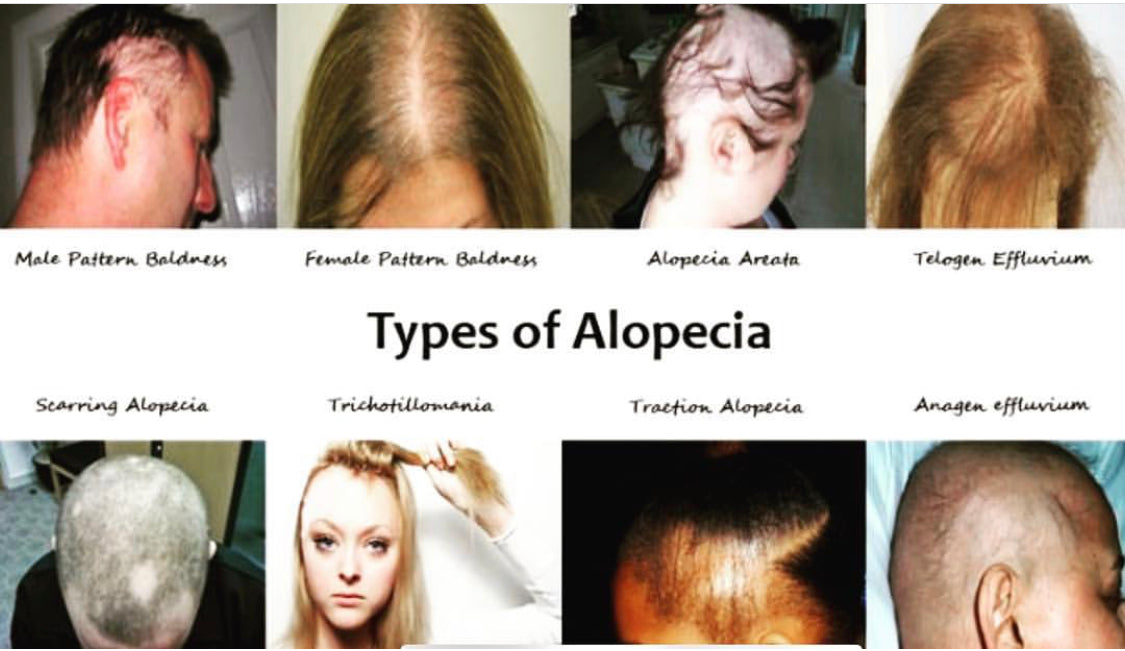Table Of Content

Alopecia areata is an autoimmune condition affecting hair follicles causing hair loss. It typically presents with discrete bald patches on the scalp but can cause hair loss from all hair-bearing areas on the body. This type of disease develops when your immune system mistakes a part of your body as foreign and attacks.
What are some common misconceptions about an alopecia areata diagnosis?
Women who have developed masculine characteristics should call their doctor to discuss how soon they should be seen. Other people should see a doctor when possible, but an appointment is not urgent unless other symptoms develop. “The vast majority of people have patchy hair loss, a more limited disease. Even without treatment, 50% of them will spontaneously recover within a year,” Dr. Costello says. But excessive hair shedding, particularly in patches on the scalp, could be a sign of alopecia areata. Alopecia areata usually affects the head and face, though hair can be lost from any part of the body.
What is baldness?
Corticosteroids work to prevent these attacks from happening. To make our selection of the best alopecia areata treatments, we consulted medical professionals and dermatologists for their recommendations. It’s important to remember that not all treatments work for every person. Sometimes, hair loss might occur again, even when treatment was previously successful. “Most of the treatments involve keeping the immune system from attacking the hair follicles,” Geddes-Bruce says.
Can alopecia be prevented?
Hair typically falls out in small, round patches about the size of a quarter. Some people experience full regrowth of hair, while others may not. The treatment has to be repeated every 1–2 months to regrow hair, and it does not prevent new hair loss. If you’re experiencing hair loss, talk with a healthcare professional to find out what treatment options are available.

There are a number of hair replacement techniques available. But, hair replacement surgery can’t help those with total baldness. Candidates for hair replacement must have a healthy growth of hair at the back and sides of the head. The hair on the back and sides of the head will serve as hair donor areas where grafts and flaps will be taken. Some researchers and people with alopecia areata have seen a correlation between stress or a personal crisis and alopecia areata. Ultimately, the cause of alopecia areata is likely multifactorial, says Dr. Costello.
Alopecia: Symptoms, Causes, Treatment and More - Health.com
Alopecia: Symptoms, Causes, Treatment and More.
Posted: Tue, 16 Apr 2024 20:21:44 GMT [source]
Harvard Health Ad Watch: New drug, old song, clever tagline
But often treatment is necessary to try to restore healthy hair growth. If you notice hair loss anywhere on the body, visit a dermatologist soon to discuss your options. Laser light therapy is an alternate or additional treatment for male- and female-pattern hair loss (androgenetic alopecia) that has been shown to promote hair growth. Over-the-counter devices are available, or doctors can treat with laser light therapy in the office. In cutaneous lupus erythematosus, areas of hair may be lost.
When to see a doctor
I have emailed and called Daniel Alain numerous times regarding my undelivered order. I would not waste my time with this company if I had it to do over. I was new to alternative hair and hit my rock bottom and realized I couldn’t put off a wig any longer. She knew how vulnerable I felt and allowed me to take my time and get a piece I would be happiest with.
Editorial Advisory Board Member, Harvard Health Publishing
“As soon as you notice hair loss is happening, you should come in,” says Lauren Eckert Ploch, a dermatologist in Aiken, South Carolina. While alopecia doesn’t typically affect your physical health, the emotional and psychological distress it can cause are very real. Doctors sometimes classify hair loss as focal (confined to one part of the scalp) or diffuse (widespread). Hair loss may also be classified by whether or not scarring exists. In addition to a medical history and physical exam, a punch biopsy of the skin may help to identify the type of baldness and/or its cause.
Free Healthbeat Signup
However, it’s difficult to predict how much hair will be lost. Female pattern baldness is different from male pattern baldness because it usually starts with thinning hair along the part line. The part line can eventually widen, but complete baldness is rare. Ophiasis alopecia is a form of alopecia areata that mostly affects the sides and back of the scalp. It’s an autoimmune disorder that mainly affects young people. This works well for people with inherited baldness since they typically lose hair on the top of the head.
Often, they can diagnose what is causing your hair loss by asking about your symptoms and examining you. In one study, researchers noticed that people diagnosed with alopecia areata most often had hair loss in November, followed by October and January. Patients had the fewest flare-ups during May and August. People who lose all the hair on their scalp and body (alopecia universalis) often develop brittle, crumbling nails like those shown here. Characteristic “exclamation point hairs” may be observed, particularly at the periphery of bald patches.
Male baldness is often trivialised – our research shows it should be taken seriously - The Conversation
Male baldness is often trivialised – our research shows it should be taken seriously.
Posted: Thu, 25 Apr 2024 16:29:38 GMT [source]
There are many different classifications of alopecia areata. The classifications depend on the amount of hair you’ve lost and where you’ve lost it on your body. The ready to wear wig I received from Daniel Alain is beautiful.
But alopecia areata can affect the eyebrows, eyelashes, and elsewhere on the body. The researchers thought a combination of health disparities and genetics were the root cause. Newer treatments that are also being explored include some forms of laser therapy, microneedling with PRP, as well as other oral medications. Many of these treatments are still in the early testing phases though, and more research will be necessary. There’s a range of treatment options for hair loss, but the best option for you will depend on what’s causing your hair loss. Before pursuing hair loss treatment, talk with your doctor about the cause of your hair loss and treatment options.
Taking JAK inhibitors may help reduce inflammation and help your hair grow back. Steroid injections are a common option for mild, patchy alopecia to help regrow hair on bald spots. Healthcare professionals use tiny needles to inject the steroid into the bald area. You can rub medications into your scalp to help stimulate hair growth. A number of medications are available, both over the counter (OTC) and by prescription. It’s also important to remember that treatment isn’t always successful.
Doctors then count the number of hairs that come out with each pull. If more than 4 to 6 hairs in the telogen phase come out with each pull, the pull test is positive, and the person most likely has telogen effluvium. People who have hair loss and signs of a bodywide disorder should see a doctor promptly.


No comments:
Post a Comment